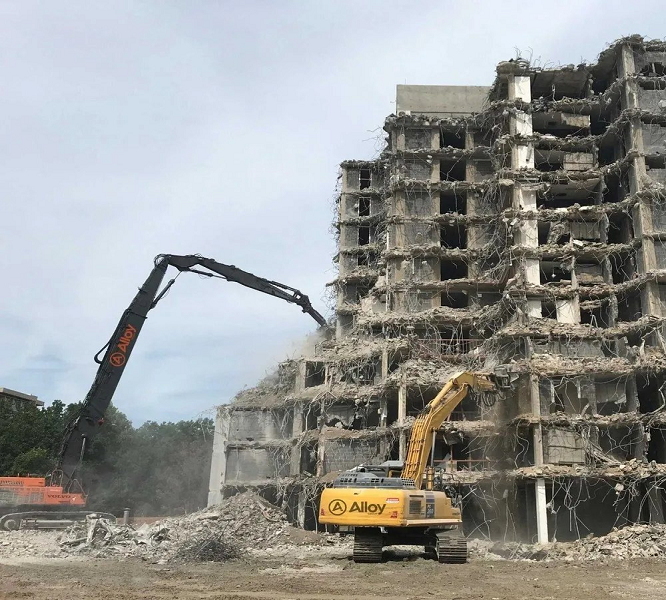High Reach Demolition
High reach demolition is a specialized method used to demolish tall structures such as skyscrapers, bridges, and chimneys. This technique involves the use of heavy machinery equipped with long arms or booms that can reach great heights. The machinery is operated by skilled professionals who carefully dismantle the structure piece by piece, ensuring the safety of nearby buildings and workers.
High reach demolition is often preferred in urban areas where traditional demolition methods may be impractical due to space constraints or safety concerns. Additionally, this method is more environmentally friendly as it produces less dust and noise pollution compared to traditional demolition techniques.
Overall, high reach demolition requires meticulous planning, precise execution, and strict adherence to safety protocols to successfully bring down tall structures in a controlled manner.


Things to be noted when doing High Reach Demolition
1.Height of the Structure
2.Grade of Concrete
3.Space surroundings of the structure
4..Time Available to deconstruct
5.Size and Quantity of reinforcement of the Structure
6.Age of the Structure
High reach demolition, also known as high reach excavator demolition, is a specialized method of tearing down large and tall structures such as high-rise buildings, bridges, and industrial facilities. This technique employs a demolition excavator equipped with an extended boom, allowing it to reach and safely dismantle parts of the structure from the top down. Here’s a detailed overview of high reach demolition .High reach demolition represents a modern, safe, and efficient method for deconstructing large buildings, reflecting advancements in engineering and machinery that allow for safer and more controlled demolition practices.

